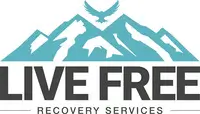What fentanyl is and isn’t can be the difference between life and death. Substances that seemed “safe” a few years ago might be one of the most deadly today. If you’re asking this question for yourself or someone close to you, you’re in the right place. Identifying a drug class is a crucial first step in seeking the right treatment.
What Is Fentanyl? Its Role in the Opioid Epidemic
Unlike natural opioids (morphine, codeine) or semi-synthetic ones (heroin, oxycodone), fentanyl is completely manufactured. Created in 1958 for severe pain, its potency caught the attention of illegal manufacturers.
Part of its growing spread is that it’s cheap to produce and profitable for dealers. Fentanyl gets mixed into cocaine, meth, and other pills during production. Most dealers don’t even know it’s there. You can’t see, smell, or taste it, making any drug use far riskier than before.
Is Fentanyl Stronger Than Other Opioids?
Fentanyl is 50 times more potent than heroin and 100 times more intense than morphine. A dose the size of a few grains of salt can be fatal.
What Is Fentanyl Used For?
Legal forms of this substance include patches, lozenges, and injections. Medically, doctors prescribe fentanyl for:
- Severe pain after major surgeries
- Cancer pain management
- Chronic pain unresponsive to other medications
- Anesthesia during procedures
What Does Fentanyl Do to You? Side Effects and Risks
Every opioid works the same way; they latch onto specific parts in your brain. Fentanyl’s intensity is simply amplified because of its strength. This can lead to side effects, such as:
- Drowsiness and confusion
- Slowed or stopped breathing
- Loss of consciousness
- Severe constipation
- Nausea and vomiting
There’s almost no room for error with this drug use. This increases the risk of life-threatening outcomes, since the amount that causes a “high” is minutely close to what can stop your breathing.
Common Fentanyl Myths Debunked
While there’s no doubt about fentanyl’s possible risks, there is still misinformation regarding this drug:
- Myth #1: “You can spot drugs with fentanyl in them.”
Truth #1: You can’t. It’s invisible and has no smell when mixed. - Myth #2: “This is just a problem for people who use heroin.”
Truth #2: Trace fentanyl can exist in cocaine, party drugs, or dupes of pills like Xanax or Percocet. - Myth #3: “Just touching fentanyl powder will kill you.”
Truth #3: Skin contact alone won’t cause an overdose. Breathing it in or swallowing it can be deadly. - Myth #4: “It can’t be more addictive than heroin.”
Truth #4: The potency makes it harder to quit.
Fentanyl Test Strips: How to Recognize and Detect
Fentanyl test strips can show if other drugs contain the substance. To use them, dissolve a small sample in water and dip the strip. Results appear within a few minutes. Typically, two lines mean negative, and one line means fentanyl is present.
You can get strips free or at low cost from harm reduction groups, pharmacies, and some health departments. Always test, even if your source seems “trusted.” Note: Some fentanyl-related chemicals may not be detected.
Note: Some fentanyl-related chemicals won’t get a positive detection with these tests.
What Color Is Fentanyl?
Fentanyl comes in many forms: white powder, blue pills, green ones, and more. Dealers add different dyes, making color an unreliable detection factor.
What Does Fentanyl Smell Like?
Typically, this substance doesn’t have a distinct smell. Sometimes, there’s a faint chemical smell, depending on the other ingredients added.
When Fentanyl Dependence Affects Your Family
If a loved one is struggling with fentanyl use, there are common signs:
- Nodding off; extreme drowsiness
- Slurred words, can’t think straight
- Pupils shrunken to pinpoints
- Breathing that’s too slow or shallow
With some drugs, you might expect someone to “sleep it off.” With fentanyl, even a short lapse can mean they stop breathing altogether. Make sure to keep Narcan around if someone isn’t responding. Then, call 911 for emergency help.
Tip for Talking: When discussing your concerns with your loved one, stick to facts about contamination. You want them to feel safe enough to open up, not hide what they’re doing. This way, they can safely seek treatment with your support.
Fentanyl Withdrawal and Treatment Options
Since fentanyl is an opioid, the opioid treatment approaches that work for heroin and other forms are effective. But withdrawal hits harder, lasting a week or more, with the peak at around day 2 or 3:
- Your muscles ache similarly to a bad flu
- Cravings feel impossible to ignore
- Throwing up and diarrhea can occur
- Anxiety and depression can worsen
Taking part in therapy programs is a usual complement to professional detox. It helps you manage healthily and sets up a sturdy foundation for longer-term recovery. If you’re dealing with depression or anxiety on top of addiction, dual diagnosis treatment treats both at once. Comprehensive care like this boosts the chances of lasting wellness.
Does Narcan Work on Fentanyl?
Yes, but you might need to use it more than once. Fentanyl’s so strong that one dose sometimes isn’t enough. Administer it, then call 911, even if the person wakes up.
Getting Help for Fentanyl and Opioid Use Disorder
Understanding that fentanyl is an extremely potent synthetic opioid helps you search for the most suitable care options. At Live Free Recovery in NH, you’ll receive evidence-based approaches that work for all opioids while accounting for fentanyl’s unique dangers.
Treatment programs include medication-assisted treatment, counseling, and peer support designed around your situation. If you or someone you care about is navigating fentanyl or other opioid misuse, contact us or verify your insurance to take the first step toward safety and recovery.





